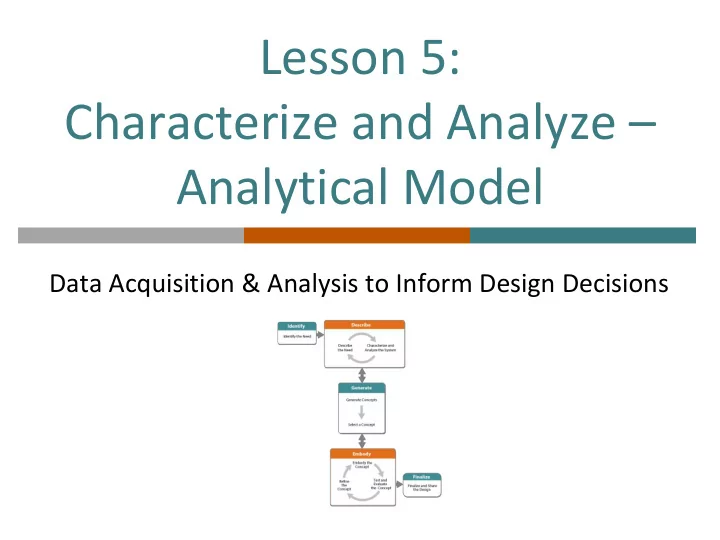

Lesson 5: Characterize and Analyze – Analytical Model Data Acquisition & Analysis to Inform Design Decisions
What have we done? What’s next?
We are concerned about acceleration and displacement. High acceleration high High displacement high forces on the building, and on forces on the building, people and objects inside. especially at the base.
Analyzing Data to Avoid High Peak Accelerations Each team has collected data about peak accelerations for at least two cases. Would you report results to the client with confidence?
How can data be distributed? Data can be distributed, or spread out, in many ways Left-Skewed Right-Skewed Random Distribution 30 20 30 15 20 20 10 10 10 5 0 0 0 Data are distributed Data are distributed Data are distributed to to the left, but randomly the right, but skewed to skewed to the right the left
Compare Data Across Systems Standard Deviation In many cases, the data tend to be around a central value and have a “normal distribution " like this: Normal Distribution 25 20 15 10 5 0
Analyzing Data to Avoid High Peak Accelerations Bell curve = normal distribution of data 34% 34% Frequency 68% 14% 14% 95% 2% 2% 1 21 41 61 81 Sample Values
Are current and proposed buildings safe w.r.t. acceleration ? High acceleration high High displacement high forces on the building, and on forces on the building, people and objects inside. especially at the base.
Are current and proposed buildings safe w.r.t. displacement ? High acceleration high High displacement high forces on the building, and on forces on the building, people and objects inside. especially at the base.
Before we can design a new building, we must understand resonance. See video on my youtube channel
Resonance A building with a high center of mass shaking back and forth is like a tall stick with a mass on the end shaking back and forth. M = This is a beam anchored only on one end – in this case, the bottom. A structure like this is called a cantilever , with a mass load on top .
A mathematical model helps consolidate contributing factors 𝑙 𝑔 ∝ 𝐼 3 𝑁
Does this really happen?
Discussion What are some advantages and disadvantages of using models to evaluate designs?
What’s Next?
Individual Assessments Assessment 5: Standard Deviation Assessment 6: Resonance
Recommend
More recommend